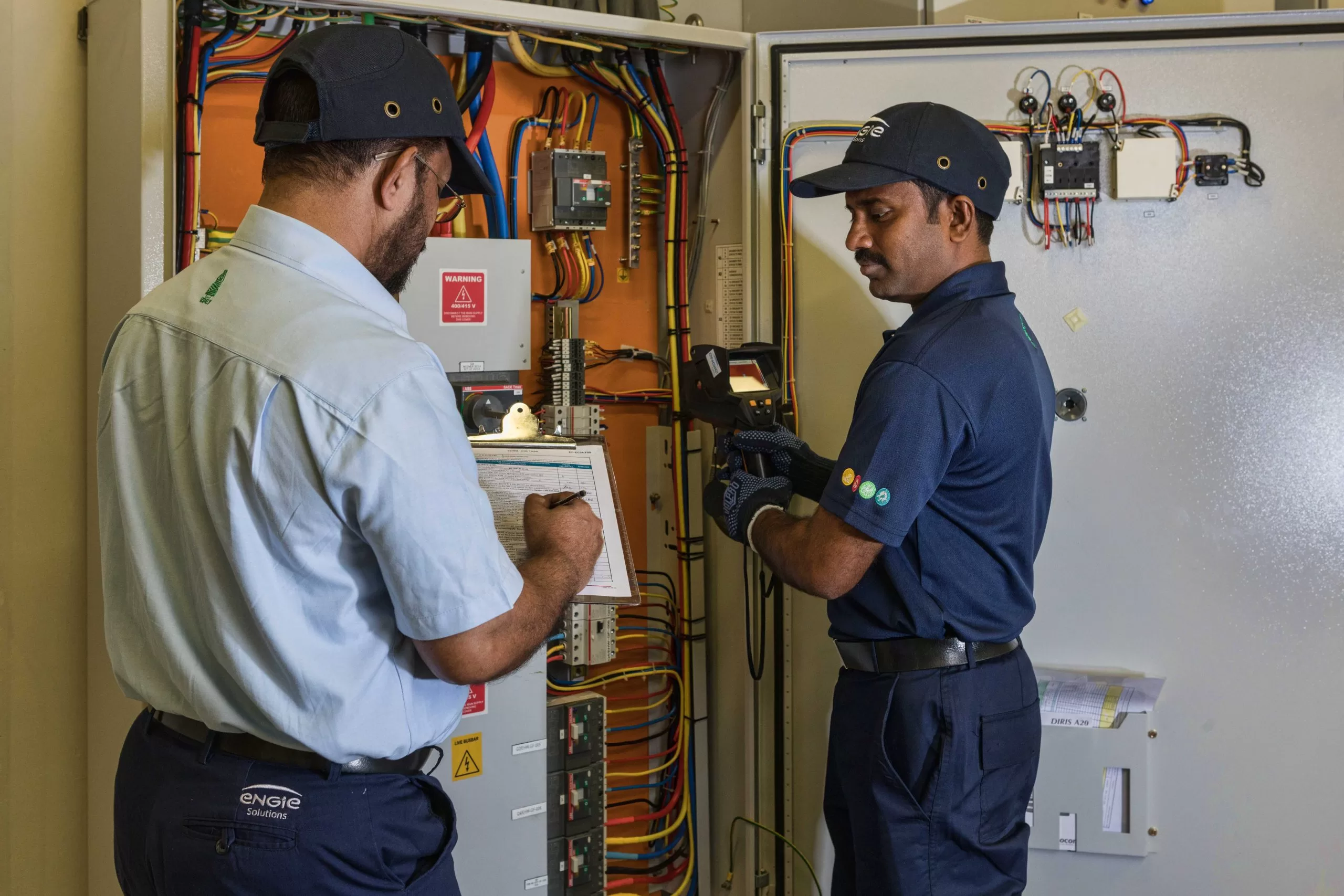
Search
People also search for:
quick contact:
were on social media:
Revolutionizing workplace safety: The predictive analytics paradigm
Revolutionizing workplace safety: The predictive analytics paradigm
Revolutionizing workplace safety: The predictive analytics paradigm

By Andre Mars
Head of QHSE, ENGIE Solutions AMEA
In today’s data-driven world, the realm of workplace safety is undergoing a profound transformation. Predictive analytics is at the forefront of this revolution—a groundbreaking approach that leverages historical data to forecast and prevent potential hazards.
As industry leaders, we must champion this technological leap to safeguard our most precious asset—our workforce—while simultaneously driving operational excellence.
Traditional safety management has been reactive, addressing incidents after they occur. Predictive analytics turns this approach on its head, offering a proactive solution that anticipates risks before they materialize. By harnessing data from diverse sources, such as IoT devices, environmental sensors, and employee feedback, we can identify patterns that signal impending dangers. This shift from reactive to proactive safety management represents a paradigm change in how we approach workplace safety.
Consider this scenario: A construction company analyses data from wearable devices and finds that fatigue-related incidents spike during certain shifts. Armed with this insight, they can adjust schedules or implement additional safety measures during high-risk periods. This proactive stance doesn’t just respond to accidents; it prevents them, marking a significant leap forward in safeguarding our workforce.

Andre Mars, Head of QHSE, ENGIE Solutions AMEA
The benefits of adopting predictive analytics extend far beyond reducing accident rates. A safer workplace fosters a sense of security among employees, boosting morale and productivity. Furthermore, improved safety records often translate to reduced insurance premiums and workers’ compensation costs, directly impacting the bottom line.
In my experience leading safety initiatives, I’ve witnessed firsthand how data-driven decisions can transform workplace culture. When employees see that their safety is being prioritised through innovative means, trust and engagement are cultivated. This, in turn, creates a virtuous cycle where workers become more proactive in reporting potential hazards, further enriching the data pool for predictive models.
Cyber hygiene is a paramount necessity
While the potential of predictive analytics is immense, its implementation comes with challenges. Data quality and privacy concerns top the list, followed by the need for specialized skills to interpret and act on the insights generated.
To overcome these hurdles, organizations must invest in robust data infrastructure and cybersecurity measures to ensure data integrity and protection. Comprehensive training programs are essential to enhance data literacy across all levels of the organization. It’s crucial to foster a culture of continuous improvement, where insights from predictive models are regularly reviewed and acted upon.
The ethical implications of using predictive analytics in workplace safety cannot be overlooked. We must ensure that the use of employee data is transparent, consensual, and in compliance with privacy regulations. It’s crucial to strike a balance between leveraging data for safety improvements and respecting individual privacy rights. Open communication with employees about how their data is being used to enhance safety can help build trust and acceptance of these new technologies.
Furthermore, we must be mindful of potential biases in our predictive models. If not carefully designed and monitored, these models could perpetuate existing inequalities or create new ones. Regular audits of our predictive systems and diverse representation in the teams developing and implementing these technologies can help mitigate these risks.
Starting small with a pilot project in a high-risk area and scaling up based on lessons learned is also a prudent approach. This method allows for fine-tuning of processes and builds organizational buy-in. It’s important to remember that implementing predictive analytics is not a one-time effort but an ongoing process of refinement and adaptation.
A new dawn
As we look to the future, integrating predictive analytics with emerging technologies promises even greater advances in workplace safety. AI-powered cameras can detect when personal protective equipment is not being worn correctly, or augmented reality systems that overlay safety information onto a worker’s field of vision. Combined with predictive analytics, these technologies could revolutionize how we approach workplace safety.
Moreover, the advent of next-generation networks such as 5G will enable real-time data processing at unprecedented speeds, allowing for immediate risk alerts and interventions. This capability could be lifesaving in high-risk industries such as construction, manufacturing, or mining. As leaders, we must stay abreast of these developments and be ready to integrate them into our safety strategies.
The shift towards predictive analytics in safety management is not just a technological upgrade; it’s a fundamental reimagining of how we protect our workforce. It requires a commitment from leadership to foster a data-driven safety culture and invest in the necessary tools and training. This commitment must be unwavering and long-term, as the full benefits of predictive analytics may take time to materialize.
As we stand on the brink of this new era in workplace safety, I challenge fellow industry leaders to embrace predictive analytics. Let’s move beyond reactive measures and create environments where risks are anticipated and neutralized before they can cause harm. In doing so, we not only protect our most valuable asset—our people—but also position our organizations at the forefront of innovation and operational excellence.
Source: Construction Week
webincorp